When two different properties share an adjoining wall, tis is known as a party wall and there are certain rules that the inhabitants of both properties need to adhere to if work needs to be done on or around it.
In this guide we look at the ules and regulations surrounding party walls and what you need to know.
Working Near a Boundary or Boundary Wall
Questions often arise about working close to or on property boundaries, like using a neighbour’s wall for an extension or shed. The rules, mostly covered by the Party Wall Act of 1996, govern such situations.
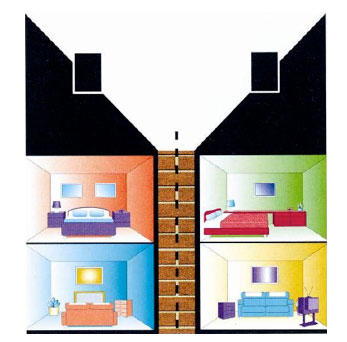
The Party Wall Act applies when sharing a boundary
The Party Wall Act 1996 has been in force for situations such as this since July 1st, 1997, and outlines regulations for work on shared walls or near party walls, including excavation near neighbours’ foundations.
In any case, whether you as the owner-builder are doing the work or a builder is doing it for you, written notification, as per the Act’s requirements, must be given to the neighbour concerned, this is the law.
Templates for such notices are available from the government to assist with compliance, as any notification must be in written form.
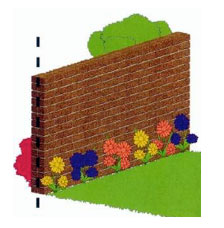
The Party Wall Act covers garden walls
The Act outlines three types of notices depending on the work:
- Work directly on a party wall requires a Party Structure Notice (Section 2 of the Act)
- New walls along or astride the boundary require a Line of Junction Notice (Section 1 of the Act)
- Excavations near an adjoining owner’s structure require a Notice of Adjacent Excavation (Section 6 of the Act)
In some cases, depending on the work involved, multiple notices may be necessary for a single project.
Written agreement from the neighbour, whether for or against the work, is essential to protect future property owners. For any disputes, there is also a resolution framework in place and available.
For full legal details, refer to the Party Wall Act on the gov.uk website.
Understanding Party Walls
A Party Wall encompasses:
- Walls between buildings owned by different people
- Walls on one person’s land separating two owners’ properties
- Walls, like garden walls, serving as property boundaries (excluding wooden fences)
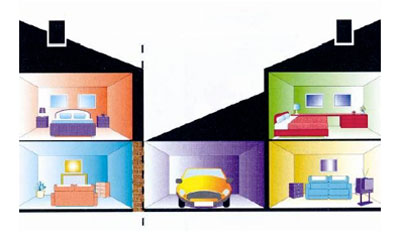
The party wall act covers using party walls as part of a new construction
Understanding Party Structures
The Party Wall Act also applies to shared parts of buildings, like walls between semi-detached properties, which separate the two dwellings.
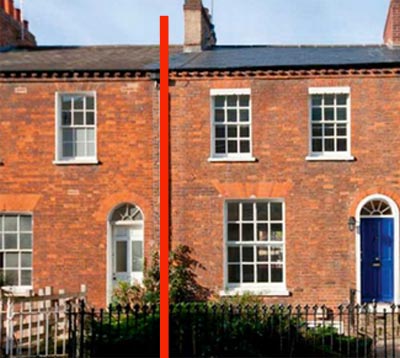
The party wall between semi-detached properties splits the overall building into two separate dwellings
This can also include floors in a block of flats that divide separate dwellings owned by different people.
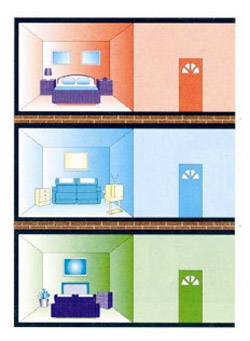
Floors are included in the party wall act as structures
Types of Work Covered by the Party Wall Act
Under the Party Wall Act, you can proceed with the following work after informing the owner of the shared boundary wall and gaining their consent:
- Repairing a party wall
- Removing chimney breasts or flying buttresses from a party wall
- Adding a storey to the height of a party wall
- Installing or repairing a damp proof course
- Underpinning the party wall for repair or settlement prevention
- Using the party wall to support beams or joists with pad-stones
- Increasing the depth of a party wall for basement installation
- Rebuilding a deteriorating party wall
- Excavating near a party wall’s foundations

Removing chimney breasts is covered by the Party Wall Act
When working on a party wall, you must take reasonable care to prevent damage, and if any damage occurs, you’re responsible for repairs.
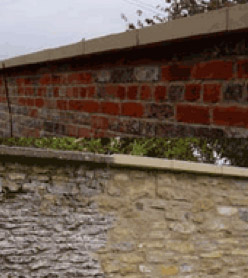
Foundations of garden walls extend into both properties
If you need additional help and advice with anything to do with part walls, download this explanatory help booklet for more assistance.
Does the Party Wall Act Impact Planning Permission?
The Party Wall Act and planning permission are distinctly 2 separate entities. However, your planning officer might advise seeking permission from your neighbour if your planned work, submitted for planning approval, involves anything around their boundary.
For work on a party wall or property boundary, planning permission or building regulation approval is generally not required, unless the specific work necessitates such approval.
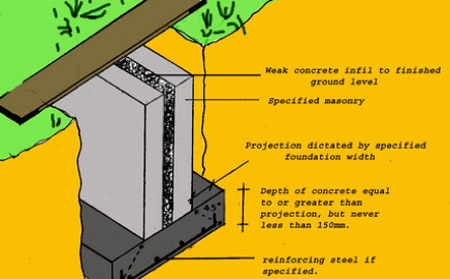
Party wall act includes foundation near neighbours property
Letter Templates to Inform Your Neighbour About the Work you Intend to do
If you are intending works on or around a party wall, here are some handy template letters that you can use to inform yor neighbours of your intensions the correct way.
Templates for Homeowners Planning Work
If you’re planning to do the work yourself, here are the templates you’ll need:
- To notify your neighbour about work on a shared structure, use this letter template
- For constructing a new wall along a boundary, use this template
- To build a wall very close to the boundary, but on your land, use this template
- For excavations within 3m or 6m of the boundary wall extending deeper than existing foundations, use this template
Further notes and assistance on filling out each type of letter if you need it can be found here on the gov.uk website.
Responding to a Notice: Positive or Negative
If your neighbour plans to work on your party wall, use these letter templates to communicate your decision, whether positive or negative:
- Positive acknowledgment of party structure notice
- Negative acknowledgment of party structure notice
- Acknowledgment of new wall astride a boundary
- Acknowledgment of new wall on neighbours land
- Positive acknowledgment of 3 to 6m excavation notice
- Negative acknowledgment of 3 to 6m excavation notice
What Can I Do to My Side of a Party Wall Without Notifying my Neighbour?
While it’s courteous to inform your neighbour, there’s no requirement to do so for minor tasks like putting up shelves or wiring, as long as you don’t disturb them beyond normal daily activities.
For advice on constructing foundations, check out our project on types of foundations.
Browsing the project should also help you understand how certain works might affect your neighbour’s property.
What to Do if There’s a Dispute
If there’s disagreement about whether work can proceed, each party should hire a surveyor, or both parties can jointly hire one.
The surveyors will issue a “Party Wall Award” determining the work’s scope, hours of operation, and who bears the costs, if any benefits arise.
However, there are a few rules:
- You can’t act as your own surveyor.
- If your neighbour refuses cooperation, you can hire a surveyor on their behalf.
- If both parties hire surveyors and there’s a complaint, the surveyors can appoint a third surveyor to mediate, but this can be costly. The law encourages resolving disputes within the provided framework, offering letter templates and ample information for easy resolution.
- If you disagree with the Party Wall Award, you can appeal by filing an appellant’s notice in a county court. Learn more here.

Surveyors are required to sort out party wall act disputes
What Happens When Work Starts?
Once the work is agreed upon, the neighbour must grant access, if needed, to the party wall or structure during normal working hours. However, a 14-day notice of intent must be given.
For more details, download the explanatory booklet mentioned above. It provides extensive information clarifying both your rights and responsibilities.
Good luck with your party wall project!
Working on or around party walls can be tricky and a potential minefield of trouble and hassle if not done the correct way, however if you follow the rules and work with your neighbours, keeping them in the loop at all times, then your project is sure to go smoothly.

